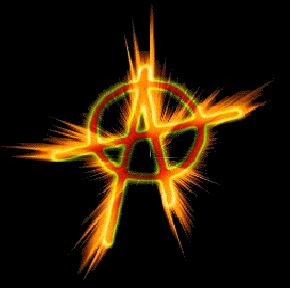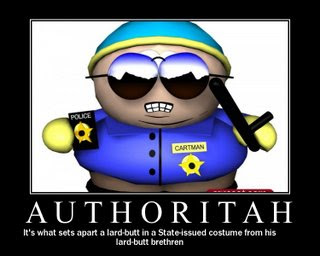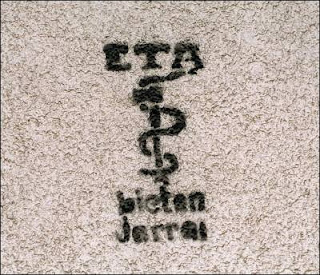Berlin has witnessed a spate of arson attacks targeting exclusive cars including Mercedes-Benz, Porsches and BMW’s. The German police have warned that these attacks could signify a potential return to leftist and anarchist violence which ravaged the country during the 1970’s. Berlin have prompted police to warn of a resurgence of the leftist and anarchist violence that terrorised Germany in the 1970s.
Head of the German police union, Rainer Wendt, compared the arson attacks to;
"a renaissance of the leftist terror of the 1970s, borne by hatred of the state and its system, directed against the people who represent it".
Germany has not witnessed such wide spread anarchy since the infamous Red Army Faction (RAF), founded in 1968, created havoc during much of the 70’s. The radical leftist group were also known as the Baader-Meinhof Gang, named after two of their founding leaders, Andreas Baader (1943–77) and Ulrike Meinhof (1934–76).
The Red Army Faction were the first leftist organisation to conduct a sustained armed struggle to combat anti-imperialism in the West. The organisation was steeped in Marxism-Leninism revolutionary ethos and existed for close to 28 years. The RAF affirmed their commitment to violence in pursuit of their anti-imperialist agenda in its first Manifesto entitled ‘The Concept Of The Urban Guerrilla’. This document concluded by stating;
‘To carry out urban guerrilla warfare means to lead the anti-imperialist struggle offensively. The Red Army Fraction creates the connection between legal and illegal struggle, between national struggle and international struggle, between political struggle and armed struggle, between the strategic and tactical position of the international communist movement.’
Between May 11th and May 24th 1972 the RAF embarked on a bombing spree targeting symbols of Western Imperialism including an American military base, a German Police head quarters in Augsburg, the US Armed Forces European Headquarters based in Heidelberg and Springer Press in Hamburg for printing what they regarded anti-left propaganda. Also, they murdered a Karlsruhe federal court judge, Buddenberg, in direct retaliation for alleged mistreatment of RAF prisoners.
However, within the first two weeks of June ’72 the majority of RAF members had been rounded up by German authorities and imprisoned. Undeterred the leftist faction re-organised their strategies and perspectives whilst in prison awaiting their trials. RAF militant activity was to resurface in 1976 when they seized the German embassy in Stockholm. They demanded the release of imprisoned RAF members in exchange for attaches that they were holding hostage. The siege ended when police stormed the building killing two captors.
Ulrike Meinhof was found murdered in her prison cell in September 1976. Following her death German authorities arrested and imprisoned the principle lawyers representing RAF prisoners and their supporters under anti-terrorism laws.
1976 also witnessed the highest number of 2,956 public demonstrations (2,956) in its history which formed the back drop for the now infamous ‘German Autumn’. It is the collective name given to a chain of events which began with the RAF assassination of Chief Federal Prosecutor Siegfried Buback, this killing signalled a significant shift in tactics by the organisation. Previously, the majority of their attacks were confined to western imperialist symbols whilst this killing signified a shift in emphasis to imperialist figure heads. Within 3 months of this attack the RAF struck again this time turning their attentions to Jurgen Ponto, the President of Dresdner Bank. Punto was one of the top five influential businessmen in Germany at the time and represented German interests in NATO and around the globe. However, it emerged that Punto’s assassination was a kidnap attempt that went drastically wrong. In September of ’77 RFA embarked on their most audacious kidnap attempt of their existence.
There target was Germany’s most influential capitalists of his generation, Hans Martin Schleyer, who was both President of the Federal Association of German Industries and the Federal Employers Association. Schleyer was a former Nazi SS officer and was perceived by many as a link between the Third Reich and the post-war Germany. Almost immediately having kidnapped their victim RAF demanded the release of 11 of their members from prison. As the stalemate continued a Palestinian group “Commando Martyr Halimeh” in solidarity with RAF hijacked a Lufthansa airliner and demanded the release of the 11 RAF prisoners and 2 members of the Popular Front for the Liberation of Palestine (PFLP) being held in Istanbul. During the following five stand off the prisoners were refused all communication with their lawyers and media under emergency drafted legislation known as ‘Kontaktsperre’.
On day 5 of the hijacking German Special Forces, GSG-9, stormed the aircraft in Mogadishu, Somalia, killing 3 of the 4 hijackers. In retaliation, RAF killed Schleyer. That same night Gudrun Ensslin, Jan-Carl Raspe, and Andreas Baader were killed in suspicious circumstances whilst in their prison cells. Initially regarded as a suicide pact this was related refuted with medical evidence.
Sporadic violence followed until March 1998, when the Red Army Fraction (RAF) announced its dissolution after 28 years of armed struggle.
Are We Witnessing a Re-Emergence of Leftist Revolutionary Action
Regarding this recent resurgence in violence Rainer Wendt was remaining coy regarding any potential escalation saying;
"It cannot be ruled out that in the next level of escalation, politicians could again be back in their sights,"
German Conservative politicians have denounced Berlin’s left-leaning government of showing undue leniency towards the culprits. No comment has been forthcoming from Germany’s Federal government.
Left-wing protests have witnessed an upsurge in violence so far this year with 479 policemen injured in running battles with agitators at a Labour Day riot in the anarchist heartland of Kreuzberg.
Time will tell if this violence will dissipate or will manifest itself in more radical action.























